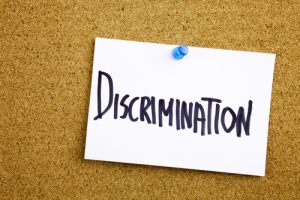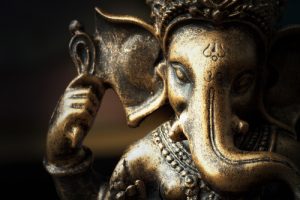Religion or belief: Employee guide

Introduction
Religion or belief discrimination is prohibited by our equality legislation.
Definition of religion or belief
In our equality legislation “religion” means any religion and a reference to religion includes a reference to a lack of religion. A religion must have a clear structure and belief system. Denominations or sects within a religion, such as Shias within Islam or Roman Catholics within Christianity, may be considered a distinct religion under the legislation.
“Belief” means any religious or philosophical belief and a reference to belief includes a reference to a lack of belief.
The belief must be:
- genuinely held;
- it must be a belief rather than an opinion or viewpoint;
- it must be a belief as to a weighty and substantial aspect of human life and behaviour;
- it must have a certain level of cogency, seriousness, cohesion and importance; and
- it must also be worthy of respect in a democratic society, not being incompatible with human dignity and people’s fundamental rights.
In a case on philosophical belief the Court also stated a) that a belief may not be shared by others; b) while support for a political party would not in itself amount to a philosophical belief, a belief in a political philosophy, such as Marxism, Socialism or Capitalism might potentially qualify; and c) a philosophical belief may be based on science. The Court stated that a belief in climate change could potentially amount to a philosophical belief.
Direct religion or belief discrimination
It is unlawful for an employer to discriminate directly by treating a job applicant or employee less favourably because of religion or belief.
An example could be where a Muslim job candidate is more qualified for a role than a Christian candidate but the prospective employer offers the job to the Christian candidate on the basis that they believe that the employer’s clients would prefer to deal with a Christian.
Another example could be where an a Buddhist employee is given a lower bonus than a Hindu employee despite performing as well as the Hindu employee.
On the other hand, the European Court of Justice (ECJ) considered a dress code case where the employer had a code of conduct stating that employees “are not permitted to wear any religious, political, philosophical symbols while on duty”. As the rule applied to all religions and everyone was treated equally, the ECJ held that it did not give rise to direct discrimination (though there could potentially be indirect discrimination – see below).
Association and perception
The discrimination need not be because of the victim’s religion or belief. It is unlawful to treat someone less favourably because of their association with someone who has a protected characteristic. For example, an employee could bring a direct discrimination claim if they were treated less favourably because they had a Sikh friend.
If a person is wrongly perceived to have a protected characteristic they will still be protected provided the treatment is because of that perception. An illustration of this could be an employee who was being treated less favourably because of a wrong belief that the person is Hindu.
Indirect discrimination
It is unlawful for an employer to discriminate by applying a provision, criterion or practice that disadvantages job applicants or employees of a particular group whose members share a religion or belief, without objective justification. The individual has to be disadvantaged, personally, too.
An example could be a fitness entre requiring all personal trainers to wear a uniform that includes shorts and no alternative is provided. The policy could conflict with some people’s religious beliefs about modesty in dress and would potentially indirectly discriminate against an employee in that group who shares those beliefs.
A policy that has an indirectly discriminatory effect may nevertheless be objectively justified. An employer would have to show that the provision, criterion or practice is a proportionate means of achieving a legitimate aim.
An example of a legitimate aim could, for example, be maintaining a corporate image. In one case, the European Court of Human Rights (ECHR) held that projecting a corporate image was a legitimate aim. The case concerned an airline prohibiting uniformed staff wearing visible jewellery and an employee objecting on the basis that she wished to wear a visible cross. The ECHR held, however, that the balance between the airline’s aim and the employee’s right to demonstrate her beliefs had not been struck (i.e. the proportionality test failed). This was because the employee’s cross was discrete, would not have detracted from her professional image and would not really have encroached on the interests of others.
Harassment
Harassment related to religion or belief is prohibited. It happens where a person engages in unwanted conduct related to religion or belief and the conduct has the purpose or effect of violating the other person’s dignity or creates an intimidating, hostile, degrading, humiliating or offensive environment for them.
An example of harassment could, for example, be a colleague making an abusive comment about a person’s religion or belief.
Victimisation
An individual must not be victimised because they have alleged discrimination, brought a discrimination claim or given evidence or information in relation to discrimination proceedings.
If, for instance, an employee raises a complaint at work about religion or belief discrimination and then that employee is sidelined at work as a result of raising the discrimination complaint, this could amount to victimisation.
Exceptions
There are a few exceptions where difference in treatment may be lawful. One example is where belonging to a particular religion is essential for the job (an occupational requirement).
Bringing a claim
Job applicants or employees who believe they have suffered religion or belief discrimination could consider bring a claim in the employment tribunal.
Prior to issuing a claim the job applicant or employee would be required to follow the Advisory Conciliation and Arbitration Service (Acas) early conciliation process. Depending on the circumstances, it may also be appropriate to have raised an internal grievance before bringing the claim.
Any claims must normally be filed within three months (less a day) from when the discriminatory act occurred. The time limit is subject to the early conciliation rules for extending time.
This guide is intended for guidance only and should not be relied upon for specific advice.
If you need any advice on religion or belief discrimination of have queries relating to other employment law matters please do not hesitate to contact me on 020 3797 1264.





